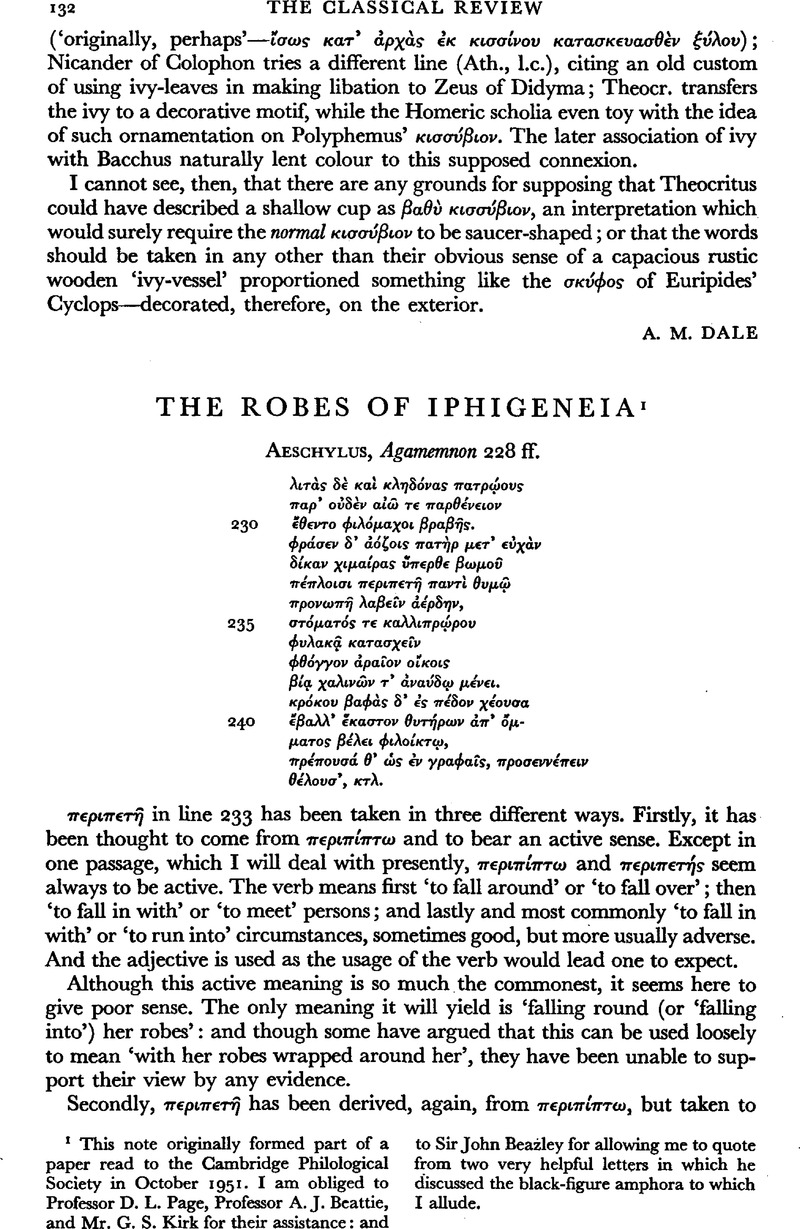Article contents
The Robes of Iphigeneia1
Published online by Cambridge University Press: 13 February 2009
Abstract

- Type
- Review Article
- Information
- Copyright
- Copyright © The Classical Association 1952
References
page 133 note 1 A Reverse Index of Greek Nouns and Adjectives (Chicago, 1944), pp. 730–1.
page 133 note 2 ⋯ναπετ⋯ς at περ⋯ ⋯δ⋯νων, 9: διαπετ⋯ς at περ⋯ καρδ⋯ης, 10.
page 133 note 3 See Gossen in R.-E. viii, col. 1837.
page 134 note 1 Mr. G. S. Kirk points out that a long robe was the usual costume of a sacrificer.
page 134 note 2 The Lyric Metres of Greek Drama (Cambridge, 1948), p. 81.
page 134 note 3 Ed. Fraenkel takes προνωπ⋯ to refer to Iphigeneia's position before she is seized. Since he also takes παντ⋯ θυμῷ with λαβεῖν, he is led to assume a very peculiar word order, despite the warning of W. Ferrari (Annali della R. Scuola N.S. di Pisa, 1938, p. 391).
page 134 note 4 πρ⋯πουσ⋯ θ' ὡς ⋯ν γραφαῖς need not mean that Aeschylus had in mind any particular painting. Professor Beazley writes: ‘I suppose that the heart of the comparison is the speaking look combined with the inability to speak. Aeschylus is thinking of the great new art of his time, with its new power of expressing π⋯θος, not of the simple works of early periods.’ Cf. Isthmiastae, F 1 A in Mette, Nachtrag zum Suppl. Aesch. i. 6–7: … ![]() .
.
- 2
- Cited by


